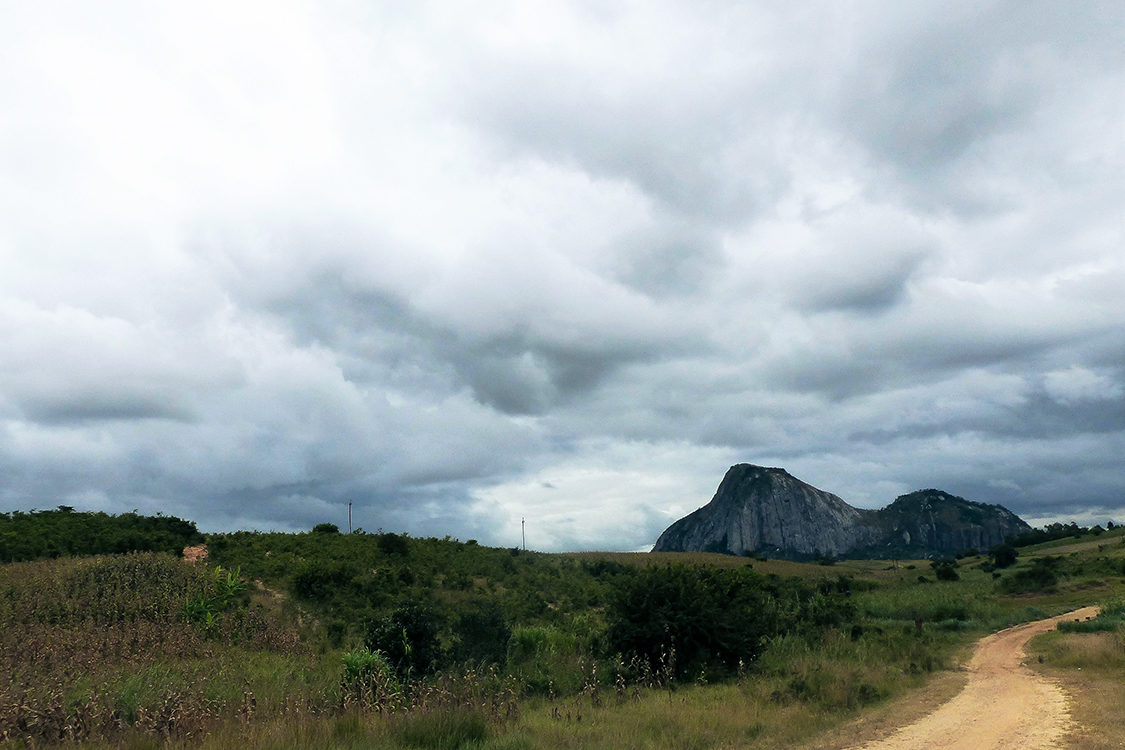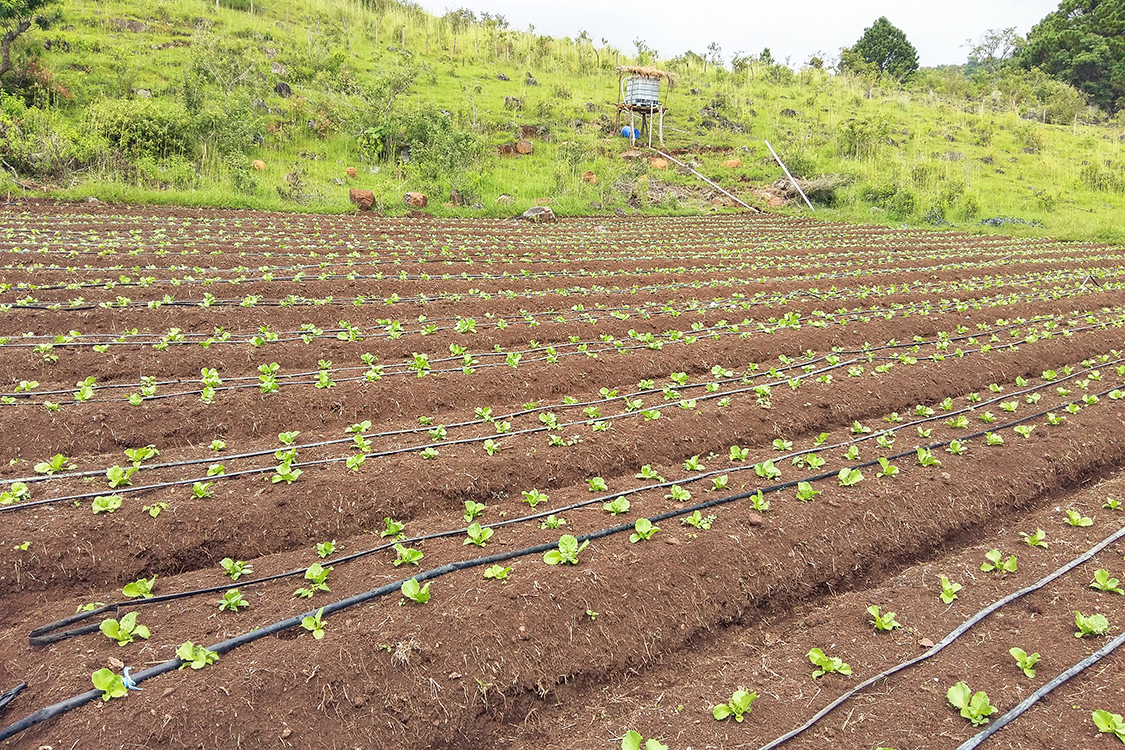Climate-smart agriculture

Climate Resilience
Micro-irrigation technology can help farmers adapt to unpredictable rainfall.
While we know that humans have increased greenhouse gases in the atmosphere leading to an increase in overall global mean temperatures, the local effects of this are entirely unpredictable. Due to environmental patterns (e.g., the Gulf current, the El Niño weather cycle), some locations may actually experience decreases in temperature instead of increases. Climate change is making it increasingly challenging to predict the weather, particularly the intensity and frequency of weather extremes, and seasonal or longer-term changes.
Because most of these effects have to do with water—when and how much it rains, how much remains in reservoirs and groundwater reserves—micro-irrigation technology (MIT) has the potential to help subsistence farmers not only address climate change but also improve their incomes and overall well-being.
For people who rely on their own agriculture to sustain them, unpredictable weather can be a life or death issue. Heavy rainfall that occurs right after planting can wash the seeds away, seeds that a poor smallholder cannot afford to replace. Extended droughts that lead to a reduction in groundwater, lowering the water table, can mean that a farmer is unable to access the water because her pump doesn’t extend down to where the water is located. For non-irrigated agriculture, which is the majority, droughts, or drier-than-usual periods, can halt crop development, reduce productivity, or lead to crop failure altogether.
Because most of these effects have to do with water—when and how much it rains, how much remains in reservoirs and groundwater reserves—micro-irrigation technology (MIT) has the potential to help subsistence farmers not only address climate change but also improve their incomes and overall well-being. By focusing on the smart application of water to increase efficiency, MIT enables farmers to reduce their reliance on irregular or random crop watering.
No one technology can be a panacea for all the challenges faced by smallholder farmers, especially with a changing climate. Especially problematic in recent years has been a tendency for people to misunderstand MIT to just be the black plastic lines snaking through a farm. The correct application of MIT requires more than just water distribution, but also addressing water access, water storage, crop selection, and crop storage issues. The combined suite of these activities make up modern MIT solutions.

It is time for Climate-Smart Agriculture
Climate-smart agriculture (CSA) can be defined as an approach for transforming and reorienting agricultural development under the new realities of climate change (Lipper et al. 2014). The most commonly used definition is provided by the Food and Agricultural Organisation of the United Nations (FAO), which defines CSA as “agriculture that sustainably increases productivity, enhances resilience (adaptation), reduces/removes GHGs (mitigation) where possible, and enhances achievement of national food security and development goals.” In this definition, the principal goal of CSA is identified as food security and development (FAO 2013a; 2 Lipper et al. 2014 1); while productivity, adaptation, and mitigation are identified as the three interlinked pillars necessary for achieving this goal.
iDE focuses on four key areas when implementing CSA:
- Climate adaptation/resiliency - adoption of technologies and best practices such as rainwater harvesting, conservation agriculture, reforestation, zero-burn, etc.
- Reduction of emissions - solar pumps, landscape restoration through agroforestry
- Productivity - more net income per drop of water
- Food security - access to nutritious foods and foods with higher calories
To meet these needs, iDE continues to develop technology and tools that address these issues. For example, soil moisture monitoring tools can assist farmers in managing their irrigation. Better access for rural farmers to weather and climate predictions can assist them in making informed choices about when to water. New solar pumps reduce greenhouse gases emitted by two-stroke diesel engines as well as reduce farmers’ need for fossil fuels.
The market for climate change resilience
In the early days of iDE’s work to increase smallholder incomes in Bangladesh and India, the big issue facing farmers was providing access to groundwater. But as iDE has expanded its development approach to Africa and Central America where water resources are scarce and drought conditions more frequent, it needed to find solutions that addressed the entire cycle of water for farming. When designed, installed, and operated correctly, drip irrigation has great potential for increasing farm incomes while also conserving water resources. The search for solutions continues, such as methods to harvest rainwater, help retain water in soil longer, and identifying drought-tolerant seeds, including the selection of new varieties, and, ideally, use of older varieties for biodiversity conservation.
New technologies create opportunities for entrepreneurs. Just as the development of new energy technologies has resulted in jobs in manufacturing, installing, and maintaining solar and wind equipment, there is the potential need for people to support resource-smart applications.
At iDE, we support networks of technicians based on our Farm Business Advisor (FBA) model, who assist farmers in evaluating their fields, plan integrated solutions that use resources wisely, and install and maintain the selected equipment. Many FBAs start as farmers themselves, who undertake the role to share their knowledge and experience with their peers. For many, it’s their first opportunity to build their own business—the first step to seeing themselves as entrepreneurs.
Surprisingly, climate-smart agriculture development is still in its infancy, as evidenced by the rapid pace of new options on the market—from competing solar pumps to new materials and designs for water storage and distribution lines. As competition increases and prices decrease, the beneficiaries of this exciting market are the smallholder farmers who need this technology to increase their production and incomes, maximizing their potential to withstand future shocks of shifting climate patterns.

